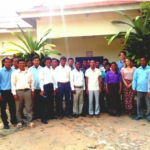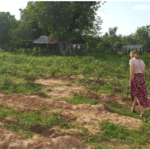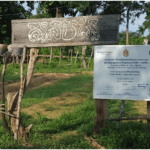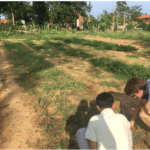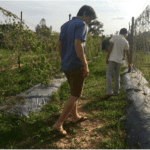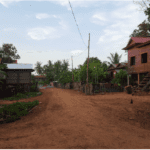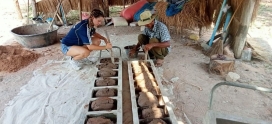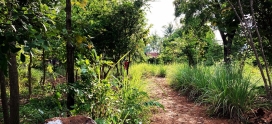Samrong diary 3
This past week has been very full as we had 2 full-day trainings on Wednesday and Thursday with around 40 teachers total. We set up the first day in an outdoor covered space behind the CIDO office. We expressed our gratitude to teachers for the important work they’re doing to educate the next generation about growing food in an environmentally-responsible way, and thanked them for letting us visit their beautiful gardens. We are very grateful for Ratana being able to translate so much of our presentation into Khmer and provide copies to all of the teachers. We think it really helped them to understand better and have notes to take away with them.
First, Kyle lead a presentation on Integrated Pest Management, stressing the importance of prevention through maintaining healthy soil, and the various physical, biological and cultural (environmental) control methods. Sokphea, CIDO staff member, then explained briefly about the pests specific to the ASPUS gardens and how to manage them. We enjoyed some delicious baked goodies during our mid-morning “coffee break” including some fried doughnut-like snacks with banana, rice and other things inside.
After the lunch break, we held a brief discussion about the challenges in the ASPUS gardens including flooding, dirty water, animal intruders and running out of water and shared some solutions. Next, we launched into the Garden Education presentation that focused on teaching methods and specific lessons and activities. We discussed the value in student-centered learning, where teachers train students to develop critical thinking skills and find the answers on their own. And how working in the garden can improve students’ self-confidence, social skills and health as they are more likely to eat vegetables. I tried to emphasize how the garden is an opportunity for students to connect to the natural world, which is very important today since youth are becoming more immersed in technology (even in Cambodia). We took a mid-afternoon fruit break at a time when it was raining rather hard and we had to use a microphone for the teachers to hear.
Next, we presented the ideas of connecting the garden to lessons about nutrition as well as to academic activities in math, science (experiments), and creative writing through garden journals. We offered ideas of many different lessons with accompanying activities such as understanding soil composition, decomposition, germination, plant parts, “Plant Doctor” and seeds. We also suggested incorporating art, building projects and school grounds improvement into the garden activities. Overall, we received very positive responses from teachers and staff who are enthusiastic to experiment with these different lessons and broaden the scope of their garden training to students.
After the second day of our training was finished in Banteay Ampil, we took a tour with Ratana around the district visiting about 10 more schools to capture the GPS coordinates which Kyle is using to create a map.
We finished our week off with a final presentation to CIDO staff on Organic Standards (including ASEAN GAP Standards) and Best Management Practices.
As it was Friday afternoon, it was a little hard to maintain interest at some points. But staff were interested to discuss the effects they’ve observed from tillage (plowing) and are interested in experimenting with some no-till techniques, which we are thrilled about!



